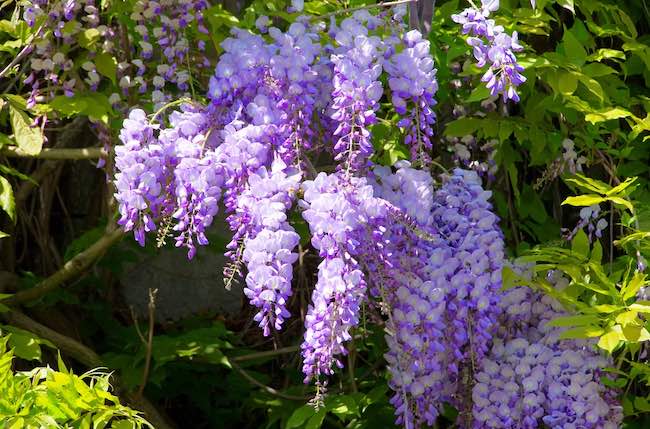The Importance of Soil Preparation for Young Wisteria Plants

Planting a young wisteria is an exciting venture for any garden enthusiast. To ensure your success look to these key points
- If possible make sure the wisteria you buy has flowered before as a lot of plant have been propagated from non flowering plants
- Buy plants that are not to mature or root bound in the pot ideally on a single cane in a 5 to 10 litre pot 1.5 to 2 metres tall
To ensure the rapid and healthy growth of this stunning flowering vine, meticulous soil preparation is key. In this article, we will explore the significance of soil preparation and the vital role of humus, mulch, and organic matter in nurturing a flourishing wisteria.
- Understanding the soil composition: Wisteria plants thrive in well-draining soil that is slightly acidic to neutral. Before planting, assess the soil composition in your chosen area. This step is crucial to identify any deficiencies and ensure a conducive environment for the wisteria to establish strong roots.
- Incorporating Humus: Humus, rich in organic matter, is a cornerstone for soil fertility. Adding humus aids in improving soil structure, moisture retention, and nutrient availability. Mixing well-rotted compost into the soil or if not available well rotted garden compost or leaf mould provides a nutrient-rich foundation, promoting optimal conditions for wisteria growth.
- Mulching Magic: Mulching around the base of the wisteria serves multiple purposes. It helps retain soil moisture, suppresses weeds, regulates soil temperature, and gradually releases nutrients as it decomposes. A layer of organic mulch, such as wood chips or straw, safeguards the delicate roots and fosters a healthy microclimate for the plant.
- The Organic Matter Advantage: Wisteria plants benefit greatly from an abundance of organic matter in the soil. Organic matter improves soil structure, allowing better aeration and water penetration. Incorporating well-decomposed leaf litter or garden compost boosts microbial activity, enhancing the soil’s fertility and supporting the wisteria’s nutrient uptake.
- Ensuring Proper Drainage: While organic matter is vital, it is equally important to ensure proper drainage. Wisterias do not tolerate waterlogged soil, which can lead to root rot. Incorporating materials like sand or perlite can help enhance drainage in heavy clay soils, creating an optimal balance for the young wisteria’s root development.
In the journey to nurture a young wisteria into a robust and vibrant plant, soil preparation becomes the linchpin of success. The inclusion of humus, mulch, and organic matter creates an environment that fosters rapid growth, lush foliage, and bountiful blooms. By investing time and effort in preparing the soil, gardeners lay the groundwork for a flourishing wisteria that will grace their landscape for years to come.
Images from Depositphotos